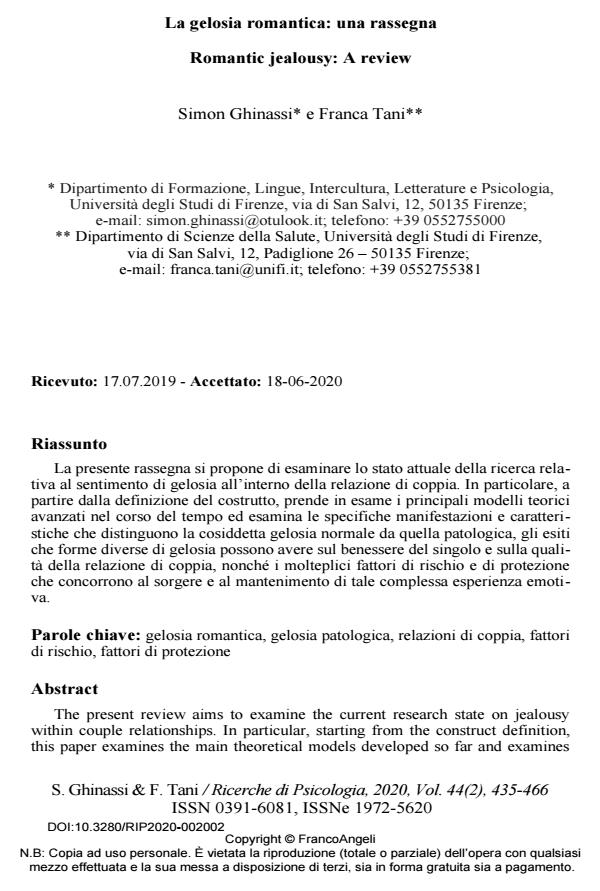La gelosia romantica: una rassegna
Titolo Rivista RICERCHE DI PSICOLOGIA
Autori/Curatori Simon Ghinassi, Franca Tani
Anno di pubblicazione 2020 Fascicolo 2020/2
Lingua Italiano Numero pagine 32 P. 435-466 Dimensione file 324 KB
DOI 10.3280/RIP2020-002002
Il DOI è il codice a barre della proprietà intellettuale: per saperne di più
clicca qui
Qui sotto puoi vedere in anteprima la prima pagina di questo articolo.
Se questo articolo ti interessa, lo puoi acquistare (e scaricare in formato pdf) seguendo le facili indicazioni per acquistare il download credit. Acquista Download Credits per scaricare questo Articolo in formato PDF

FrancoAngeli è membro della Publishers International Linking Association, Inc (PILA)associazione indipendente e non profit per facilitare (attraverso i servizi tecnologici implementati da CrossRef.org) l’accesso degli studiosi ai contenuti digitali nelle pubblicazioni professionali e scientifiche
La presente rassegna si propone di esaminare lo stato attuale della ricerca re-lativa al sentimento di gelosia all’interno della relazione di coppia. In particolare, a partire dalla definizione del costrutto, prende in esame i principali modelli teorici avanzati nel corso del tempo ed esamina le specifiche manifestazioni e caratteristiche che distinguono la cosiddetta gelosia normale da quella patologica, gli esiti che forme diverse di gelosia possono avere sul benessere del singolo e sulla qualità della relazione di coppia, nonché i molteplici fattori di rischio e di prote-zione che concorrono al sorgere e al mantenimento di tale complessa esperienza emotiva.
Parole chiave:Gelosia romantica, gelosia patologica, relazioni di coppia, fat-tori di rischio, fattori di protezione
Simon Ghinassi, Franca Tani, La gelosia romantica: una rassegna in "RICERCHE DI PSICOLOGIA " 2/2020, pp 435-466, DOI: 10.3280/RIP2020-002002